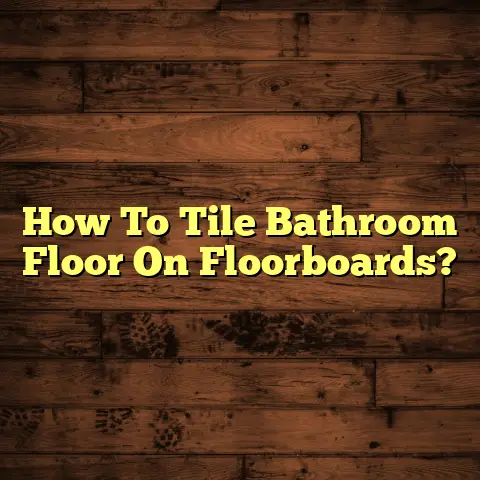LVP vs. Laminate: Cost Analysis? (Save $ Now!)
I’ve spent years knee-deep in sawdust and adhesives, helping homeowners just like you transform their spaces.
And one thing I’ve learned?
Flooring is way more than just something to walk on.
It sets the tone for your entire home, impacting everything from aesthetics to functionality.
Two materials that keep popping up in conversations are Luxury Vinyl Plank (LVP) and Laminate.
They’re super popular, and for good reason.
But which one is right for you?
More importantly, which one will save you money in the long run?
Durability is the name of the game.
A floor that buckles under pressure (literally!) will cost you more in repairs and replacements than you bargained for.
So, let’s dive into the ultimate showdown: LVP vs. Laminate.
We’ll break down the costs, the pros, the cons, and everything in between.
By the end, you’ll be armed with the knowledge to make the smartest choice for your home and your wallet.
Section 1: Understanding LVP
Okay, so what exactly is Luxury Vinyl Plank?
Imagine a multi-layered cake. That’s kind of how LVP is constructed.
You’ve got the wear layer (the top, protective coating), the design layer (the pretty picture that looks like wood or stone), the core (the main body, usually waterproof), and the backing (for stability and sound absorption).
Think of the wear layer as your floor’s bodyguard.
The thicker it is, the better it can withstand scratches, scuffs, and everyday abuse.
LVP is a champ when it comes to durability.
It’s naturally water-resistant (some are even 100% waterproof!), making it perfect for kitchens, bathrooms, and mudrooms.
I’ve seen LVP stand up to everything from spilled juice boxes to muddy dog paws.
And trust me, that’s saying something!
It’s also pretty scratch and dent-resistant, which is a huge plus if you have kids or pets.
Speaking of lifespan, a well-maintained LVP floor can last for 15-25 years, or even longer.
I’ve seen some high-quality LVP installations that are still going strong after 30 years!
Maintenance is a breeze.
Just regular sweeping and the occasional damp mop are usually all you need.
Repair costs are generally low, too.
If a plank gets damaged, you can often replace it without having to tear up the entire floor.
Many LVP products come with certifications and warranties that back up their durability claims.
Look for certifications like FloorScore, which ensures low VOC emissions.
And pay attention to the warranty – a longer warranty usually indicates a higher-quality product.
Section 2: Understanding Laminate
Now, let’s talk Laminate.
Like LVP, laminate flooring is also constructed in layers.
It typically consists of a wear layer, a design layer, a core board (usually made of high-density fiberboard or HDF), and a backing.
The wear layer on laminate is designed to resist scratches and fading, but it’s not always as effective as the wear layer on LVP, especially when it comes to water resistance.
While some laminate floors are water-resistant, they’re generally not waterproof.
That means spills need to be cleaned up quickly to prevent damage.
I’ve seen too many laminate floors ruined by leaky dishwashers or overflowing bathtubs.
Laminate can be a good choice for living rooms, bedrooms, and hallways – areas that don’t typically see a lot of moisture.
The lifespan of laminate flooring can vary depending on the quality and the amount of traffic it receives.
On average, you can expect a laminate floor to last for 10-20 years.
However, factors like humidity, sunlight, and heavy foot traffic can shorten its lifespan.
Maintenance is similar to LVP – regular sweeping and damp mopping.
But you need to be extra careful not to get laminate too wet.
Avoid using harsh chemicals or abrasive cleaners, as they can damage the surface.
Repairing laminate can be tricky.
If a plank gets damaged, it’s often difficult to replace it without damaging the surrounding planks.
Sometimes, you might even have to replace the entire floor.
Like LVP, laminate flooring also has industry standards and warranties.
Look for certifications like the North American Laminate Flooring Association (NALFA) certification, which indicates that the product has met certain performance standards.
Section 3: Cost Analysis of LVP and Laminate
Alright, let’s get down to brass tacks: the cost.
This is where things can get a little tricky, because prices can vary depending on the brand, quality, and location.
But I can give you a general idea of what to expect.
Initial Purchase Price:
- LVP: Typically ranges from $2 to $7 per square foot.
- Laminate: Generally costs between $1 and $5 per square foot.
At first glance, laminate appears to be the cheaper option.
However, don’t jump to conclusions just yet!
Installation Costs:
- LVP: Installation costs can range from $1 to $5 per square foot, depending on the complexity of the job and whether you hire a professional or do it yourself.
- Laminate: Installation costs are typically similar to LVP, ranging from $1 to $4 per square foot.
One thing to keep in mind is that both LVP and laminate often require an underlayment.
This is a thin layer of material that goes between the subfloor and the flooring itself.
Underlayment can add to the overall cost, but it can also improve sound absorption and make the floor more comfortable to walk on.
Long-Term Cost Implications:
This is where LVP really starts to shine.
Because it’s more durable and water-resistant, LVP tends to require less maintenance and fewer repairs over time.
Let’s say you install 1,000 square feet of flooring in your home.
Here’s a hypothetical breakdown of the long-term costs:
As you can see, even though laminate has a lower initial cost, the long-term costs can be significantly higher due to potential repairs and replacements.
Here’s a real-life example:
I had a client who installed laminate flooring in her kitchen.
A few years later, a pipe burst under the sink.
The laminate floor was completely ruined, and she had to replace the entire thing.
If she had chosen LVP, it likely would have survived the water damage.
Another client installed LVP in her rental property.
She told me that it’s been a lifesaver because it’s so easy to clean and maintain, even with tenants coming and going.
Section 4: Pros and Cons of LVP vs. Laminate
Okay, let’s break it down with a good old-fashioned pros and cons list.
This should help you visualize the key differences between LVP and laminate.
LVP Pros:
- Durability: Highly resistant to water, scratches, and dents.
- Cost: Can be more expensive upfront, but often cheaper in the long run due to lower maintenance and replacement costs.
- Aesthetic Appeal: Available in a wide range of styles and colors, often mimicking the look of real wood or stone.
- Installation: Relatively easy to install, especially with click-lock systems.
- Environmental Impact: Some LVP products are made from recycled materials.
LVP Cons:
- Can feel colder underfoot than laminate.
- May not add as much resale value to your home as hardwood flooring.
Laminate Pros:
- Cost: Generally cheaper upfront than LVP.
- Aesthetic Appeal: Also available in a variety of styles and colors.
- Installation: Relatively easy to install.
- Can feel warmer underfoot than LVP.
Laminate Cons:
- Durability: Less water-resistant than LVP.
- More prone to scratches and dents than LVP.
- May require more maintenance and repairs over time.
- Can be difficult to repair if a plank gets damaged.
- May not be suitable for high-moisture areas like bathrooms and kitchens.
Here’s a handy table summarizing the key differences:
Section 5: Conclusion and Final Thoughts
So, there you have it: the ultimate showdown between LVP and laminate.
We’ve covered the costs, the durability, the pros, and the cons.
Remember, flooring is a long-term investment.
Choosing the right material can save you a lot of money and headaches down the road.
While laminate might seem like the cheaper option upfront, LVP often proves to be more cost-effective in the long run due to its superior durability and lower maintenance requirements.
Ultimately, the best choice for you will depend on your specific needs, preferences, and budget.
Consider your lifestyle, your home’s environment, and your long-term goals.
Do you have kids or pets?
Do you live in a humid climate?
Are you planning to sell your home in the near future?
These are all important questions to ask yourself before making a decision.
I encourage you to weigh your options carefully and choose the flooring that will provide the best value for your money.
Don’t be afraid to ask questions, do your research, and get multiple quotes from contractors.
And remember, I’m always here to help!
Happy flooring!





